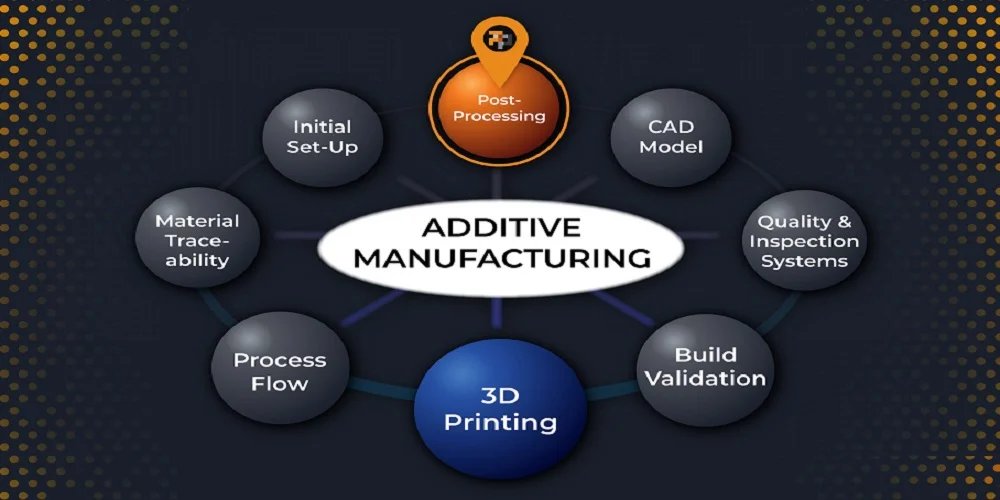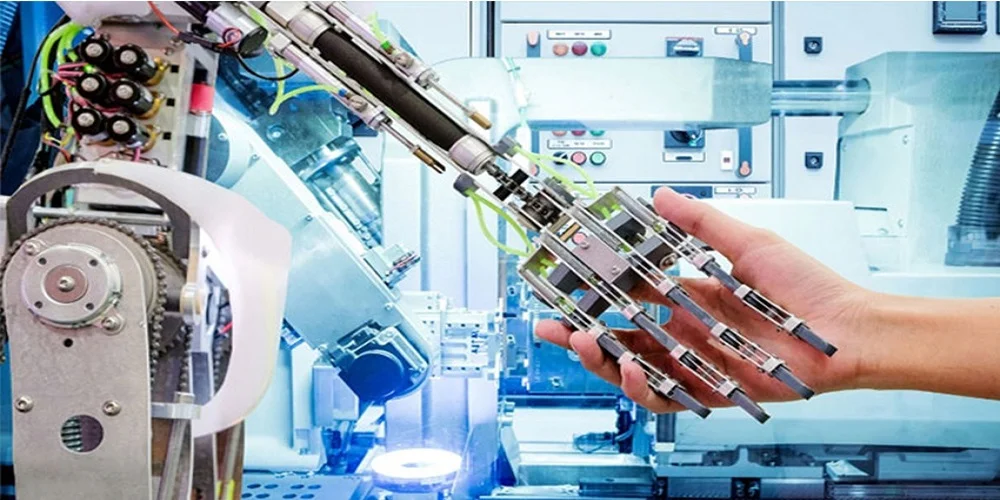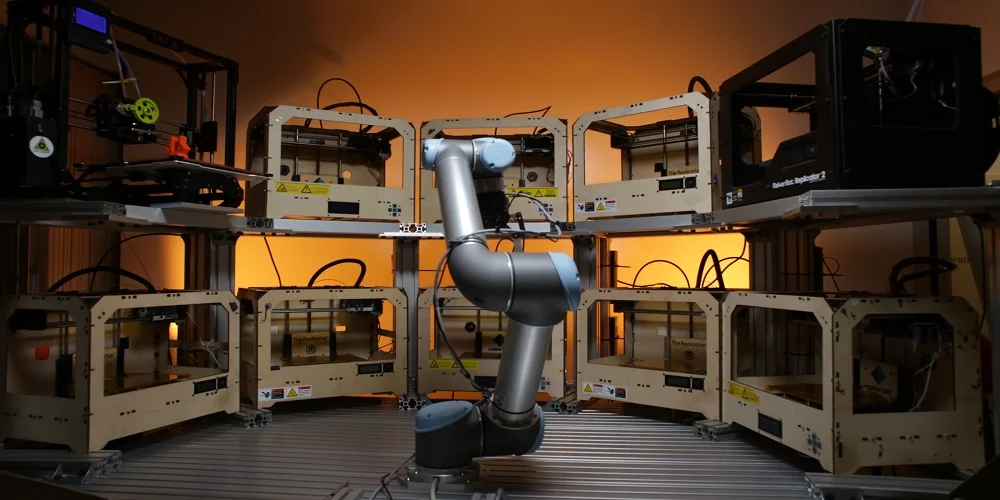
For many years, three-dimensional printing has gone from being a specialized technology to being a game-changer in various businesses. In various fields, including manufacturing and healthcare, the advent of 3D printing has introduced novel opportunities and expanded the scope of what is feasible. However, the actual revolution in 3D printing lies in using Artificial Intelligence (AI) to optimize designs and elevate this cutting-edge technology to heights that have never been seen before.
The international competitive landscape is transforming like anything. The tremendously high speed of modifications leads to both uncertainty and interest. Globally, every industry is interested to see the impact of new inventions and changes. Although, they do find it a bit difficult to keep up with the pace of the modifications.
After all, if companies want to grow, they have to make sure that they match the pace of development around the world. Businesses, such as manufacturing industries and other industries, will need to reevaluate their business models to identify potential growth opportunities. Also, companies have to find different approaches to innovate products. So, there is no doubt about the fact that there is going to be a lot of change in the manufacturing and product development units.
Additive Manufacturing (or 3D Printing) when it comes to Innovation in the Field of Manufacturing
Companies from across different industries have realized the advantages and strengths of additive manufacturing. The manufacturing industry needs to respond to the transformation by adopting the latest technologies. And, adoption of 3D printing or additive manufacturing is one of the ways to reframe business strategies.
This new technology empowers the firms to proactively reply to the needs of the customers. Also, the businesses can maintain the apt pace, precision, and quality. Therefore, the worldwide additive manufacturing industry is expected to see a lot of demand. It may touch the $ 4.42 billion mark during 2020-2025.
Harness the power of AI to revolutionize your additive manufacturing processes.
Manufacturing units have been embracing additive manufacturing as it offers tons of benefits. The technology empowers the manufacturing wings to cater to the demands of the customers. Also, with the help of additive Manufacturing CRM Services, organizations can personalize and customize without any hassle.
The use of new technology also accelerates the new product introduction cycles. Additionally, it even leads to quicker time-to-market. However, one of the most prominent benefits of Additive Manufacturing is that it helps to make the manufacturing process smarter.
How Artificial Intelligence helps Additive Manufacturing?
Additive Manufacturing experts are always looking for ways to boost reproducibility and accuracy. 3D-printed parts have to be apt, therefore, experts are trying to invent and adopt new technological methods to make the products more precise. And, as per some of the discussions, it seems that Artificial Intelligence can help additive manufacturing techniques to become more advanced, and therefore, more level of accuracy could be expected.
3D printing is certainly a game changer. Technology is evolving day by day and therefore, there is a lot that is expected from additive manufacturing and 3D printing, especially with the integration of Generative AI. AI and Additive Marketing seem to be a superb combination. AI-based programs and solutions are created to mimic the intelligence of humans. Also, we know that AI leads to automation, therefore, we can expect faster completion of the 3D printing tasks.
How AI is being used to Optimize Designs for 3D Printing?

AI can generate optimum designs that were previously inconceivable by taking into consideration a diversity of parameters, including the qualities of the material, the structural integrity, and the limits of the manufacturing process. The functionality of these designs may be altered to meet the requirements of certain applications, which leads to enhanced performance, decreased manufacturing costs, and accelerated turnaround times.
1. Increased Productivity in the Workflow
The integration of AI with three-dimensional printing has resulted in the creation of new opportunities for improving production processes and optimizing designs. To progress design solutions that are not only visually beautiful but also functionally better, artificial intelligence algorithms can examine even the most complicated data sets. If you have manufacturing equipment that has become smarter, it will be able to respond to the changing conditions at the office in real time. This will not only enable them to boost the efficiency of the system, but it will also allow them to increase the outputs that it generates. One may get a great deal more out of the gadget if one pays attention.
2. Improvements in Quality Control
It is possible to correct a significant number of problems that occur during 3D printing by taking prompt action. But, you won’t be able to imagine an engineer seeing the printing development several times on end if anything goes wrong. Artificial intelligence, conversely, can maintain a vigilant watch on the printing development without just falling unconscious.
Machine vision methods which are made via artificial intelligence can continually display the lithography procedure and associate it with a 3D CAD model. Additionally, these systems can analyze the settings and parameters of the printer, such as temperature and print rapidity. If the system detects any defects or nonconformities, can comfortably immediately alter the appropriate parameters so that it can rectify the print.
3. Design of Generative
Machines which is capable of 3D glance are adaptable and versatile. They are helpful for fast scanning a wide range of parts of the body, from a single foot or a finger to a whole torso. They can even scan a single finger. However, the technology may be used for a variety of purposes beyond just scanning people, such as creating personalized Framed Canvas Photos Prints for Wall Art that capture memories in a unique way. It may assist producers of medical appliances in digitizing their equipment and components, which could aid them in lessening expenses and lead times in the process of product creation.
4. Custom Prosthetics or Orthotics
The usage of AI technology in the procedure of building individualized prosthetics and orthotics has caused in creation of new opportunities and an improvement in the superiority of life for individuals who have limb abnormalities or physical disabilities. Orthopedic doctors at present can construct individualized and exact designs that are tailored to the specific requirements of each patient thanks to the use of AI algorithms.
Artificial intelligence is capable of analyzing huge quantities of patient data, such as medical history, body dimensions, and movement patterns, to develop prosthetics or orthotics created exceptional in terms of accuracy and functionality. A data glove is worn by the prosthetic user on their current hand, and then they conduct repetitive hand movements on both their current arm and the arm that has been amputated to train the artificial intelligence system. While they are doing this, the data glove is recording the undertaking that they wish to make, and the peripheral nerve connection is recording nerve impulses on the arm that is missing.
Our solutions optimize design, production, and quality control.
Understanding AI-based 3D Printing Software
With the advent of Artificial Intelligence (AI) and Additive Manufacturing (AM), two revolutionary technologies are coming together to revolutionize the manufacturing industry. These technologies are transforming the landscape. This potent combination has the potential to revolutionize a wide range of sectors, including aerospace and healthcare, as well as the automobile industry and others. In this blog post on LinkedIn, we will discuss the unique relationship that exists between artificial intelligence and additive manufacturing, as well as the benefits that both technologies provide and the exciting future that lies ahead.
SolidWorks (CAD)
The Computer-Aided Design (CAD) program known as SolidWorks is used by a large number of people and is especially well-liked in the mechanical engineering and industrial sectors. The following are some advantages of using SolidWorks:
- Logical and simple-to-operate interface: SolidWorks offers a clear and user-friendly interface, which makes it simple for users to understand and utilize the software.
- SolidWorks is appropriate for a broad variety of design tasks because of its extensive toolkit, which includes capabilities for 3D modeling, simulation, and technical drawing. SolidWorks also provides a large range of tools and features.
- SolidWorks has a huge and lively community of users and designers, means which has a plethora of assets and assistance accessible to users. These resources include tutorials, forums, and educational materials. SolidWorks also has a loyal following.
- Suitable for the creation of intricate designs SolidWorks is the greatest CAD software to use when it comes to producing intricate designs that are difficult to create using other applications.
Additive Manufacturing (DFAM)
The term "additive design" may refer to either the process of altering an existing conventional design for 3D printing or the process of beginning from scratch with a mentality that is compatible with "Design For Additive Manufacturing" (DFAM). The goal of designs that are made using additive manufacturing is often to consolidate assembly and reduce weight. Furthermore, DFAM software emphasizes lightweight and material efficiency when designing products. By designing components with internal lattice structures or hollow sections, it is possible to significantly reduce the weight of the final product while still maintaining the product's structural integrity. This is made feasible via clever construction.
Benefits of AI-based Defect Prediction and Prevention
1) The Capability to do Real-Time Analysis
The capacity of AI-based defect prediction to perform real-time analysis of massive volumes of data is one of the most significant advantages of this method. Manual inspection or sampling, which may be both time-consuming and subjective, is often used in traditional techniques of quality control by many organizations. On the other hand, artificial intelligence algorithms can analyze massive datasets in a short amount of time, successfully recognizing patterns and anomalies that may indicate the existence of faults. It is because of this that organizations can take preventative actions to solve these problems before they become more serious, which ultimately saves them time and money.
2) Modes of Learning that are Supervised
When using supervised learning models, manufacturers are required to collect hundreds of photos of damaged items and then annotate the data to generate a library of faults such as
Model Selection
Data scientists are tasked with selecting the artificial intelligence model that can identify faulty items in the stream of video or photos with the uppermost grade of sensitivity. Additionally, they are required to set key variables inside the model, including precision, accuracy, and F1 value.
Qualification of Model and Validation
The artificial intelligence model is first trained on past information, and then it is tested on data from the actual world to guarantee that it functions as predicted.
Integrating and Deploying System
To discover problems in real time and prevent extra work from being conducted on faulty components, it is necessary to deploy a functional model to edge computing devices after it has been determined which is ready for deployment.
3) Reduce Cost Production
To detect problems in real-time and prevent additional work on faulty components, it is necessary to use a functional model to edge computing devices after determining which are ready for deployment.
Experience the future of manufacturing with our AI-driven additive manufacturing solutions.
AI can Automate 3D Printing Operations

A 3D model may be "sliced," or divided into thin horizontal layers, much like a loaf of bread. The ultimate item is represented by a cross-section in each layer. This is an important stage since it establishes the course of travel for the printer and the quantity of material needed for each layer. This procedure used to be carried out by hand, which took time and skill. However, creating support is required when printing intricate shapes or overhangs. During the printing procedure, these frameworks serve as temporary scaffolding to keep the printed item from collapsing. In addition to material quantity, factors like printer ink usage in 2D printing can also influence the efficiency of various printing methods.
Finding the ideal mix of sturdiness and simplicity of withdrawal typically required trial and error in the tedious process of creating efficient supports. To offer the additive manufacturing business benefits via the use of artificial intelligence solutions, several actions are now being performed. In the future, research should focus on merging artificial intelligence-based printability testing, slicing, and route planning to speed up parallel slicing and optimize 3D printing pathways.
An additional fascinating notion is the utilization of Service-Oriented Architecture (SOA) to enhance the flexibility, integration, and customization of 3D printing using a cloud-based design and manufacturing system. Increasing the efficiency of machine learning-based computational via the use of exponential approaches, parallelization, and the improvement of slicing techniques would further expand the path toward rapid global industrialization.
AI can Monitor and Control 3D Printing in Real-Time
By offering skills for sophisticated analysis and decision-making, artificial intelligence has the potential to play a key role in the real-time monitoring and quality control of items which has been manufactured via 3D printing. Tools like a 3D Printing Cost Calculator can further optimize the process by providing accurate cost estimations. The following are some of the ways that artificial intelligence may be of use in this context:
Real-Time Defect Detection
The process of 3D printing can be monitored in real-time with the help of algorithms that are driven by artificial intelligence.
The Assurance of Quality
An artificial intelligence system can evaluate the quality of the produced item by comparing real-time data from the 3D printing process with the designers' requirements.
Security of Food and Quality Control
Food goods may be inspected by AI to ensure that they are safe and of high quality. Food products may be analyzed to determine the presence of pollutants, foreign objects, and abnormalities, which contribute to the establishment of food safety standards.
A Loop of Feedback
It is a constant cycle of getting feedback, thinking about it, and applying the insights acquired into our actions and behaviour’s that is referred to as a feedback loop.
Conclusion
There are AI based tools which allow the users to identify the defects within the 3D printing models as well. Thus, artificial intelligence turns out to be a favourite choice of the 3D printing industry. Although Additive Manufacturing is becoming more and more popular, in the next few years, we may see more innovation in this amazing field of work! You can check out more articles related to this in our below related article section.



